Wellington, it’s time to shift the power of cars in our streets.
Wellington, and New Zealand in general, has a chronic car problem. And as we’ve seen recently, an extreme minority can also weaponise cars against the public. What can we do to open up our streets, make cars our guests, and stop weaponising from happening again?
What’s the role cars play in our towns? And more importantly, what roles do we want to encourage or prevent them playing? Measures like pedestrian areas, living streets and smart bollards can shift the balance of power. It’s time for us to stop thinking of cars as king, and start making them guests.
With fewer cars on the road following worldwide lockdowns, many cities realised low-traffic or car-free streets are actually pretty nice!
And as we’ve seen, locally and abroad, vehicles are increasingly being weaponised. Think about Wellington’s recent occupation, how people used cars to shut down major roadways. Or consider the awful scenes of cars being driven into crowds – deliberately and “accidentally“.
So today, we’re (again) rethinking cars in our streets. How do we do that while lowering the odds of weaponised vehicles, and without sacrificing accessibility and liveability?
People-Only
To lessen the power of cars, we need to create car-free, people-focused areas.
In a city like Oslo, capital of Norway, car-free areas are thriving. The city’s been removing parking, adding bike lanes and footpaths, and setting up car-free “heart zones.”
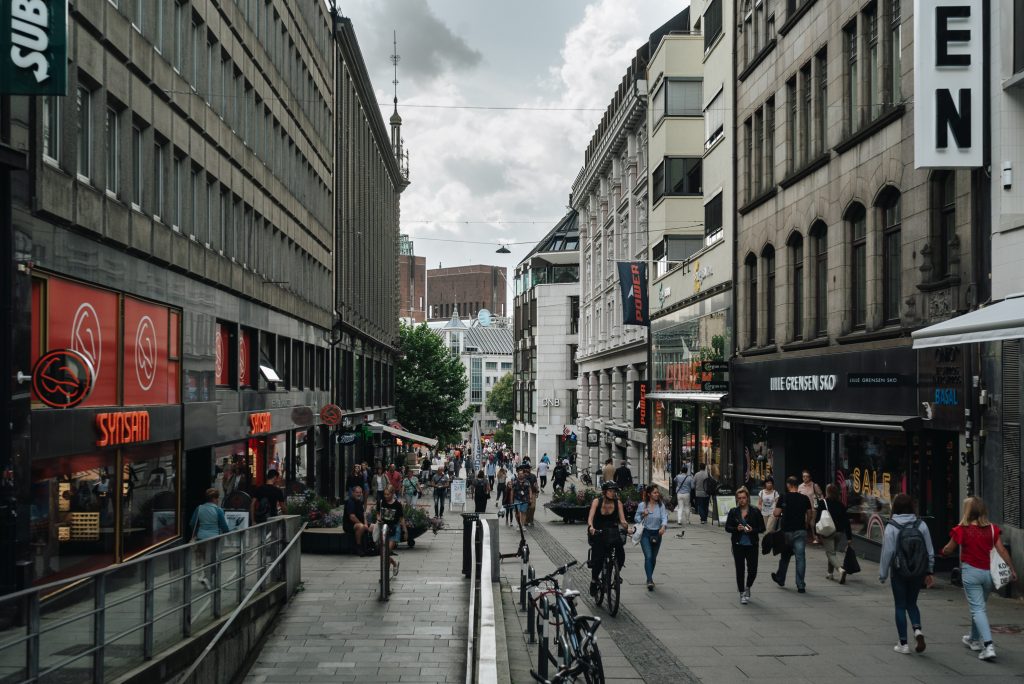
Businesses love them (despite initial fears), citizens love them. And in 2019, the city recorded zero deaths of people walking or cycling. (Wellington kills a few every year.)
And we have some opportunities on the horizon for heart zones of our own. Looking centrally, LGWM’s Golden Mile changes will largely car-free several streets in the city. The preferred option will close car-access to Golden Mile from various side streets and improve the spaces dedicated to all the other ways to move.
But even if we’re not eliminating cars altogether on a street, we can slow traffic and make cars work on equal terms with people and bikes. Enter…
Living streets
Now we’ve talked about play streets and their benefits before. They’re local, community-led events where a small, quiet street can be closed off for a street party, a BBQ, or a day of bike-riding and chalk-drawing.
A “living street” is similar but with some key differences. Kids can still play and bike while neighbours can stand and chat on the road. But living streets are permanently good to live in, not just for a few hours during an event.

In Holland, living streets (called “woonerfs” in Dutch) have reduced road collisions by 40% in areas they’ve been added to. On a living street, people walking and on bikes have priority over cars. And cars are welcome, as long as they play nice. The street’s design slows traffic and creates a calmer, truly shared space.
“Woonerfs work because they deliver a consistent message to [people driving. They] think ‘I am a guest here’, not ‘I’m in charge’.”
And the goodness doesn’t have to stop with residential streets. Inner-city neighbourhoods also deserve to be great places to live. The same design principles for a living street make spaces great for eating, drinking, shopping and being on to considerable business benefit.
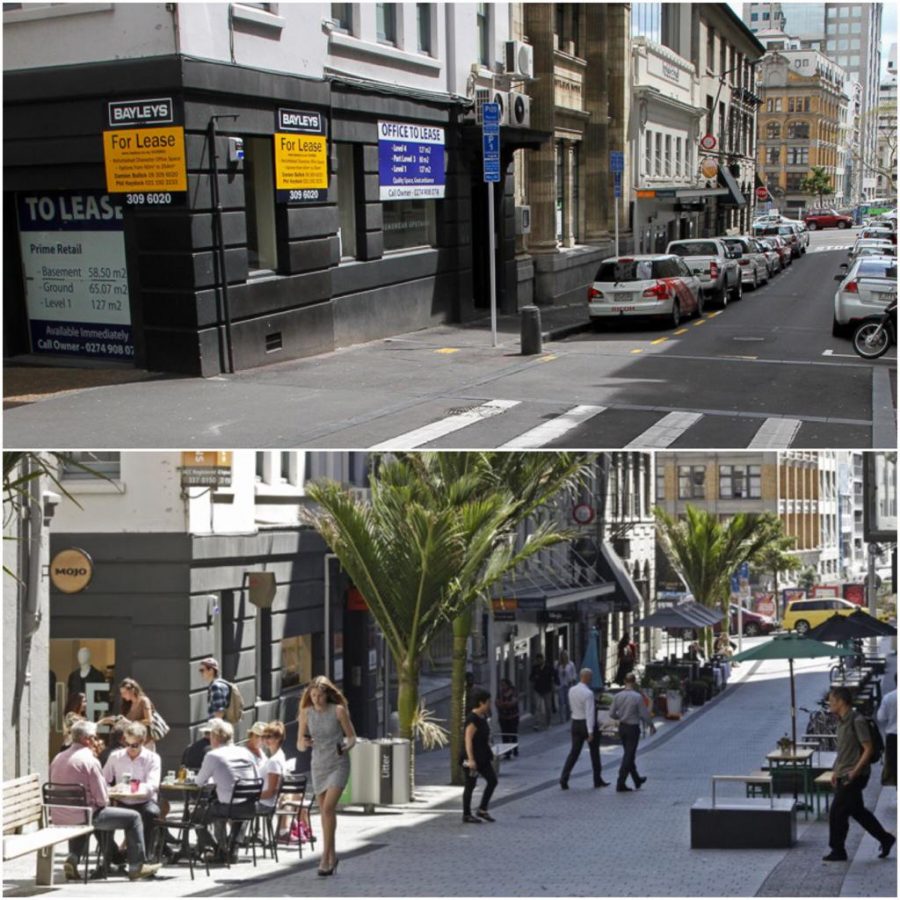
Mix and match
To make cars play nicer, sensible cities use a combination of different street types. Different environments send different messages to people using them. We can see this in play in the re-shaping of streets to make Barcelona’s highly effective superblocks, Auckland’s Access for Everyone, and Ghent’s circulation plan. (When will Wellington get such a network? More on that soon…)
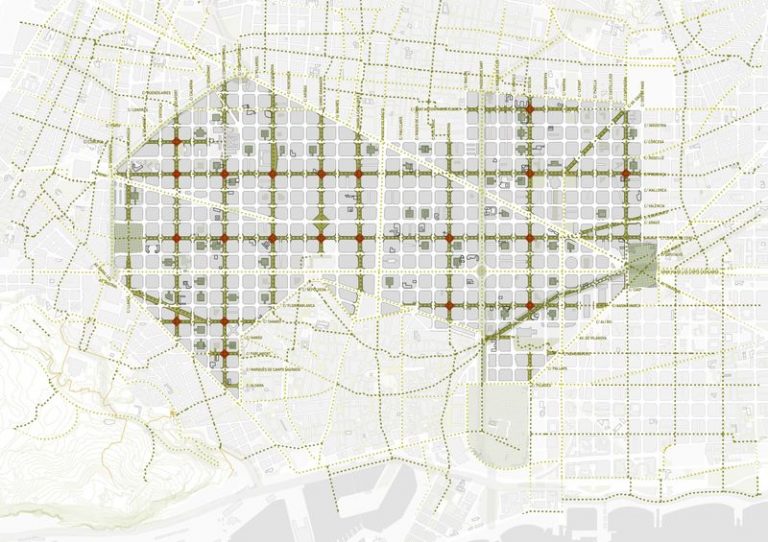
Wellington could employ a number of tools and strategies in conjunction to this effect. It could be as simple as some well-placed foliage, or slightly larger design ideas like removing road markers and adding community islands. These slow traffic and encourage people driving to be more vigilant.
For busy areas, smart kerb design is a big one too. Some places are trying out automated enforcement with cameras or geo-sensors.
The goal here is to make the best use of the valuable, highly-used kerb space and street space by keeping traffic moving in the lanes, having cars parked for less time, and reducing double-parking and circling.
Check out this pilot program for “smart” loading bays in the US. Through AI and cameras, drivers will be able to pay for parking automatically; no need to find a machine or even use an app. This also allows for data collection about this hardworking part of a street, something that is often lacking in cities.
The bollard beautiful
Alright, we’ve talked about ordinary everyday people behaving in everyday ways, but what about extraordinary behaviour? That behaviour that very rarely happens but is devastating when it does? You know what we’re talking about – weaponising cars to create terror, mayhem and disruption.
To prevent this, and everday accidents, we’re going to talk about our new favourite things. Bollards.
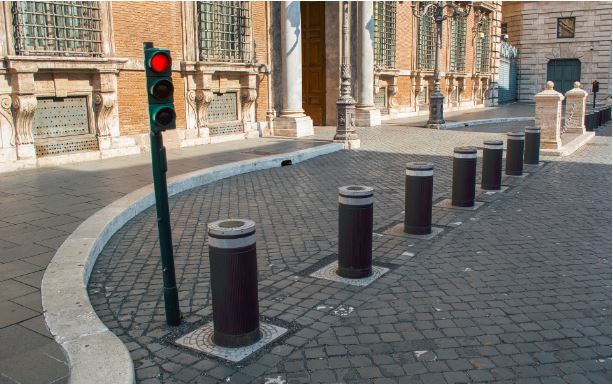
Look, we know they sound obvious and boring. They’re the least sexy part of any kind of people-focussed street. But if the World Bollard Association has taught us anything, it’s that bollards can be beautiful, exciting, and lifesaving.
Like other “modal filters”, bollards can keep cars and fast-moving vehicles out while letting bikes and people through.
Bollards may well be our best defence against weaponised vehicles and the “everyday chaos” of city streets. They push back traffic and ensure people can’t drive into crowds (purposefully or accidentally).
Cool. Seems simple enough. So why are we so excited?
There are new innovations in bollard technology that make them smarter than ever.
Take Christchurch’s recent smart anti-terror bollards on Oxford Terrace. They are intended to stop people intentionally driving at high speeds, while automatically lowering for trams and certain vehicles. They’re pricey, but they act as a deterrent without being disruptive to daily transport.
And don’t worry, bollards don’t have to be ugly. We could integrate some beautiful, or at least aesthetically inoffensive, bollards where they’re needed most. And we can design them to be architecturally beautiful for our towns and our communities.
Access for All
All of these measures should be used across different parts of Wellington’s street network to adjust the power of cars and traffic, and make our public spaces safer.
As we make all these changes, we can’t afford to overlook accessibility.
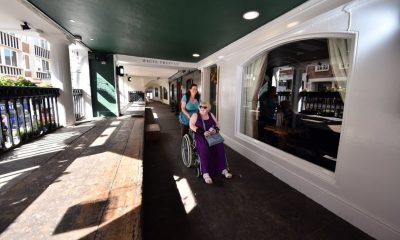
We need to be careful as we plan these to ensure spaces are still accessible by all people, bodies and mobilities, as well as for emergency services and essential deliveries (ideally by smart vehicles).
We can take another page from Oslo’s book here. They’ve kept parking spaces where they’re genuinely necessary and support a healthier city, reserving them for disabled drivers and electric vehicle charging stations. The streets are always accessible to emergency services, and some allow delivery vehicles but only during certain hours.
Overdue Changes
The fact is, there are cracks in our current systems. And they’re not new.
The pandemic has shown us we need more spaces in our neighbourhoods that let us connect, get fresh air and play safely outside. It’s shown many of us that our environment is kinda nice when there are fewer cars around or when they go a little slower.

And the recent parliament occupation has taught us that our accessways can easily be exploited. That the particularly unhinged minority can use the opportunity of car-friendly streets to take over and cause major disruption vastly out of proportion to the popularity of their cause.
As always, it doesn’t have to be this way.
“The smartest cities are not going to be the ones with the smartest technologies, but the ones where you don’t need a car in the first place.”
Janette Sadik-Khan, former Commissioner of New York City’s Department of Transportation
But what are you all thinking?
Do these options appeal to you?
Have you seen some other exciting ways we can make cars more like guests in our towns?
What do you think about a Wellington where people have more power and cars have less?
Image credits:
- Banner image – Samuel Rillstone for RNZ
- Living street with kid on bike – Dick-Van-Veen
- before-after Auckland city street – Greater Auckland
- Oslo street in heart zone – Nick Night on Unsplash
- Accessible city – Chester – the Guardian
- Families biking in lockdown streets – Jolisa Gracewood
The biggest issue as I see it really is what do you do with your largely useless car once you’ve arrived in the city from afar (or near) – as pictured in the banner image #Convoy2022NZ did create parking chaos – but I was impressed by the number of vehicles that became meeting places and hangouts for the ProFest, as it became known.
I love the idea of smart bollards and creating purposeful space for people rather than cars in the city.
There is so much creativity that can be expressed when you do more than just park a car or provide a parking space.